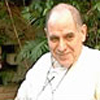Art to heal you
Article Sidebar

Main Article Content
The work of Zush reflects on human nature, on the multiple personalities that hide within an individual and the cultural constructions that limit concepts such as health and sickness, sex, madness or reason. A dual, harmonious and conflictive relationship within different subjects' personal relationships, between nature and cultural imposition, between rational thought and the body. A delicate balancing of chaos, monstrosity and rational composition.
Likewise, his iconography feeds on images born of autobiographical elements. Brains, eyes, vital organs, monsters, fire, water and birds constitute his artistic universe as does use of a calligraphic script, a personal alphabet-asura-which he has been developing since he was a boy and which currently contains around 3,000 words. All his books, all his works are written in the alphabet of his state, a hermetic code that aims to express everything that is impossible to explain in a rational way.
This is the work of someone who defines himself through use of his own psychomanualdigital concept, through which he alludes to the harmonious balance the artist must maintain between the rational idea, the creation as a physical act and the use of technology as one's own ritual of the times.
An interview by Judith Clares
Article Details
Copyright
For all articles published in Artnodes that are subject to a Creative Commons Attribution 4.0 International licence, copyright is retained by the author(s). The complete text the license can be consulted at http://creativecommons.org/licenses/by/4.0/. You may copy, distribute, transmit and adapt the work, provided you attribute it (authorship, journal name, publisher) in the manner specified by the author(s) or licensor(s).
Authors are responsible for obtaining the necessary licences for the images that are subject to copyright.
Assignment of intellectual property rights
The author non exclusively transfers the rights to use (reproduce, distribute, publicly broadcast or transform) and market the work, in full or part, to the journal’s editors in all present and future formats and modalities, in all languages, for the lifetime of the work and worldwide.
I hereby declare that I am the original author of the work. The editors shall thus not be held responsible for any obligation or legal action that may derive from the work submitted in terms of violation of third parties’ rights, whether intellectual property, trade secret or any other right.
Similar Articles
- Eduardo Kac, Transgenic Art , Artnodes: No. 1 (2002): NODE 1. Art, science and technology
- Hortensia 1979 Mínguez García, Carles 1979 Méndez Llopis, From electrography to expanded graphics: a vision on digital printmaking today and its hybridization processes , Artnodes: No. 32: (July 2023). NODE 32. Possibles III (Editors: Pau Alsina & Andrés Burbano)
- Ada Xiaoyu Hao, Making touch visible with the suture of fantasy with virtual aesthetician in “The Best Facial Clinic” – The glitchy-score of tele-synaesthesia performance in the age of global pandemic , Artnodes: No. 28: (July 2021). NODE 28. In the limits of what is possible: art, science and technology (Guest Editors: Paloma Díaz, Andrea García)
- Federica Matelli, The Everyday in Contemporary Art Practices: Towards a Speculative Poetic Regime. The Case of Nicolás Lamas , Artnodes: No. 16: (November 2015). NODE 16. Art Matters II (Editor: Ana Rodríguez Granell)
- Lorena Lozano, Net-garden: Art, Nature & Society or the Need for a Relational Vision of organic and social life , Artnodes: No. 15: (June 2015). NODE 15. Art Matters I (Editors: Pau Alsina, Ana Rodríguez Granell)
- Tincuta Heinzel, Synthetic Beuys: on Nano-Materials and the Aesthetics of Imperceptibility , Artnodes: No. 15: (June 2015). NODE 15. Art Matters I (Editors: Pau Alsina, Ana Rodríguez Granell)
- Stanislav Milovidov, Content policy and access limitations on commercial neural networks as an incentive to artivism , Artnodes: No. 33: (January 2024). NODE 33. Media Artivism: On the Archaeology and History of Digital Culture for Social Change (Guest Editors: Carolina Fernández-Castrillo & Diego Mantoan)
You may also start an advanced similarity search for this article.